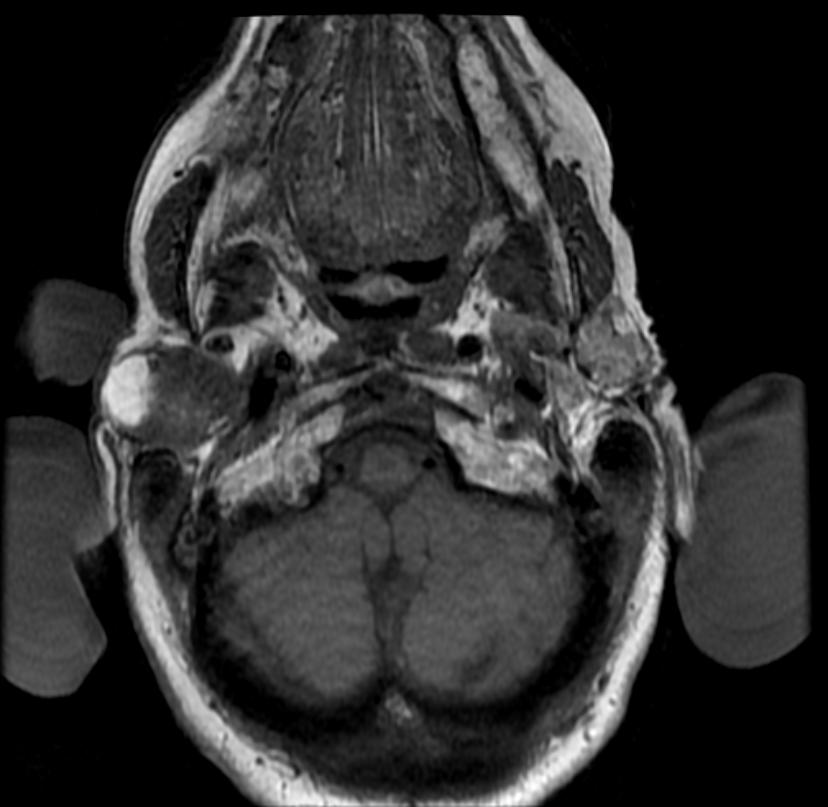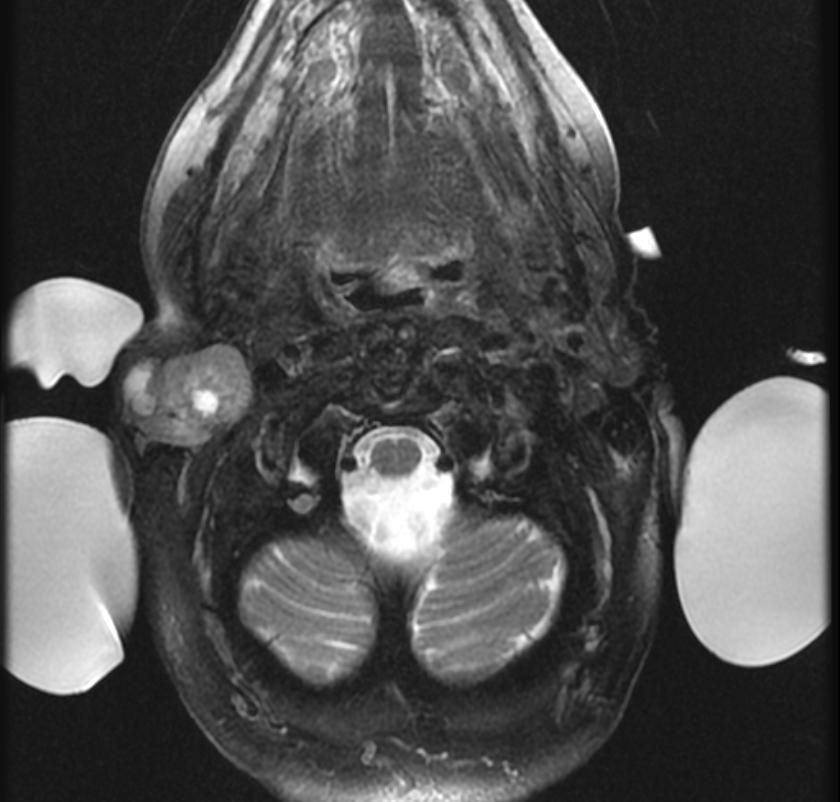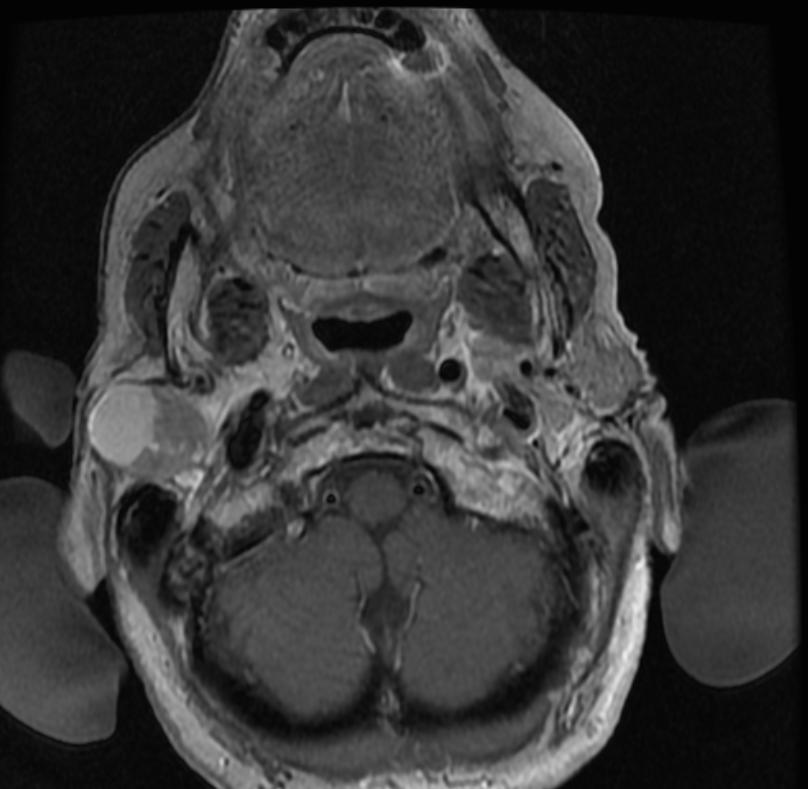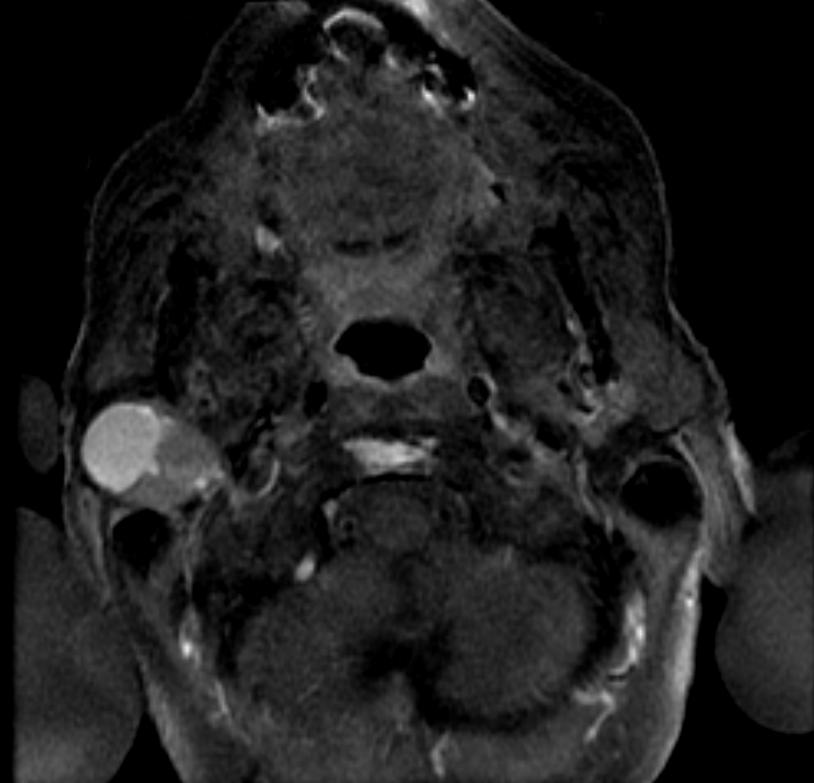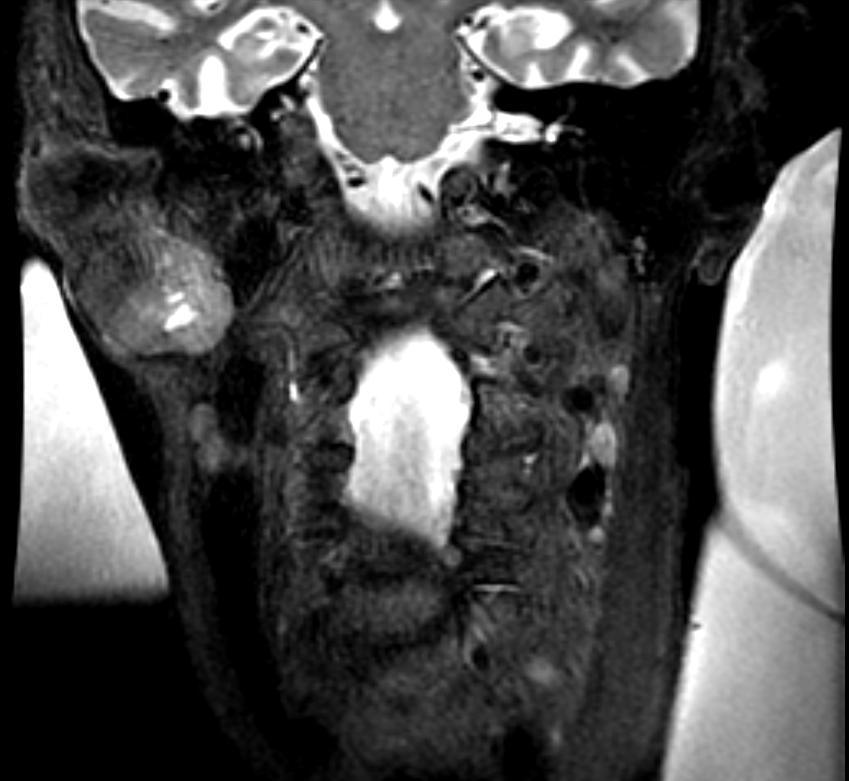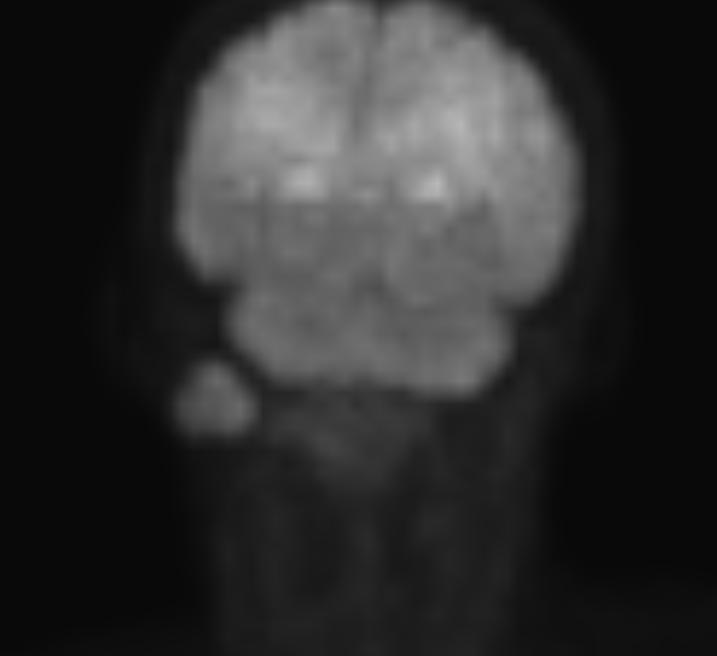Pleomorphic adenoma
Editor-In-Chief: C. Michael Gibson, M.S., M.D. [1] Associate Editor(s)-in-Chief: Maria Fernanda Villarreal, M.D. [2]
Synonyms and keywords: Pleomorphic adenoma of the salivary glands; BMT; Benign mixed tumors of the salivary gland
Overview
Pleomorphic adenoma (also known as "Benign mixed tumor of the salivary gland") is a benign neoplastic tumor of the salivary glands. Pleomorphic adenoma is the most common type of salivary gland tumor and the most common tumor of the parotid gland.[1]
Historical Perspective
- Pleomorphic adenoma was first discovered by Beahrs in in 1957.
Classification
- Pleomorphic adenoma may be classified according to anatomical distribution into 4 groups:
- Parotid gland pleomorphic adenoma
- Superficial lobe pleomorphic adenoma (most common)
- Submandibular gland pleomorphic adenoma
- Minor salivary gland pleomorphic adenoma
- Sublingual gland pleomorphic adenoma
- Pleomorphic adenoma may also be classified
Three histological types have been described:
- Mixed (hypocellular)(most common)
- Cellular
- Classic
- Other variants of pleomorphic adenoma, include: lacrimal gland pleomorphic adenoma, where they account for approximately 50% of lacrimal gland tumors.
Pathophysiology
- The pathogenesis of pleomorphic adenoma is characterized by an admixture of polygonal epithelial and spindle-shaped myoepithelial elements.
- Pleomorphic adenoma is commonly located in the parotid gland (80%)
- The mutation on PLAG1 gene has been associated with the development of pleomorphic adenoma.
- On gross pathology, characteristic findings of pleomorphic adenoma, include:
- May have cartilaginous appearance
- Typically well-circumscribed
- On microscopic histopathological analysis, characteristic findings of pleomorphic adenoma, include:
- Mixture of epithelial and myoepithelial elements
- Background stroma that may be mucoid, mixed, cartilaginous or hyaline
- Epithelial elements may be arranged in duct-like structures, sheets, clumps and/or interlacing strands and consist of polygonal, spindle or stellate-shaped cells (hence pleomorphism)
- Tumor is usually enveloped by a fibrous capsule
- On inmunohistochemistry, characteristic findings of pleomorphic adenoma, include:
- Positive S-100
- Positive SMA
- Positive GFAP
Causes
- Common causes of pleomorphic adenoma, include:
Differentiating Pleomorphic Adenoma from Other Diseases
- Pleomorphic adenoma must be differentiated from other diseases that cause dry-mouth, single-nodular parotid mass, and dysphagia, such as:
- Warthin tumour
- Mucoepidermoid carcinoma
- Myoepithelioma
- Adenoid cystic carcinoma
Epidemiology and Demographics
- Pleomorphic adenoma is common
- Pleomorphic adenoma accounts for 60% of all parotid gland tumors, and it represents 45-75% of all salivary gland neoplasms.
- The incidence of pleomorphic adenoma is approximately 2-3.5 per 100,000 individuals worldwide.
Age
- Pleomorphic adenoma is more commonly observed among patients aged [age range] years old.
- Pleomorphic adenoma is more commonly observed among [elderly patients/young patients/children].
Gender
- [Gender 1] are more commonly affected with pleomorphic adenoma than [gender 2].
- The [gender 1] to [Gender 2] ratio is approximately [number > 1] to 1.
Race
- There is no racial predilection for pleomorphic adenoma.
Risk Factors
- Common risk factors in the development of pleomorphic adenoma, include:
Natural History, Complications and Prognosis
- The majority of patients with pleomorphic adenoma remain asymptomatic for years.
- Early clinical features include dry mouth, difficulty swallowing, and a palpable single nodular mass.
- If left untreated, patients with pleomorphic adenoma may progress to develop malignant transformation.
- Common complications of pleomorphic adenoma, include:
- If there is a malignant transformation, prognosis is generally poor, and the 5- year survival rate of patients with pleomorphic adenoma is approximately 30%.
Diagnosis
Symptoms
- Pleomorphic adenoma may be initially asymptomatic.
- Symptoms of pleomorphic adenoma may include the following:
- Dry mouth
- Dysphagia
- Painful chewing
Physical Examination
- Patients with pleomorphic adenoma usually are well-appearing.
- Physical examination may be remarkable for:
- Single, mobile, and painless nodular mass.
- Eversion of the ear lobe
- [finding 3]
- [finding 4]
Laboratory Findings
- There are no specific laboratory findings associated with pleomorphic adenoma.
Imaging Findings
- MRI is the imaging modality of choice for pleomorphic adenoma.
- On CT, characteristic findings of pleomorphic adenoma, include:
- Smooth, and well-marginated tumors
- The attenuation values of the mass are usually homogeneous and higher than that of the surrounding gland
- Tumor enhancement is variable and can result in a missed diagnosis if delayed images are not acquired
- Pleomorphic adenomas are poorly enhancing in the early phase of contrast enhancement, though the amount of enhancement increases over time).
- On MRI, characteristic findings of pleomorphic adenoma, include:
- Pleomorphic adenomas are usually well-circumscribed
- Homogeneous masses with low intensity on T1-weighted images and high intensity on T2-weighted images.
- They commonly have a rim of decreased signal intensity on T2-weighted images.
- After gadolinium enhancement, the tumors are homogeneously enhancing unless they are large.
Gallery
-
MRI: A right parotid pleomorphic adenoma Images courtesy of RadsWiki
-
MRI: A right parotid pleomorphic adenoma Images courtesy of RadsWiki
-
MRI: A right parotid pleomorphic adenoma Images courtesy of RadsWiki
-
MRI: A right parotid pleomorphic adenoma Images courtesy of RadsWiki
-
MRI: A right parotid pleomorphic adenoma Images courtesy of RadsWiki
-
PET: A right parotid pleomorphic adenoma Images courtesy of RadsWiki
Other Diagnostic Studies
- Pleomorphic adenoma may also be diagnosed using fine needle aspiration (FNA) and core needle biopsy.
- Findings on fine needle aspiration (FNA) and core needle biopsy, include:
Treatment
Medical Therapy
- There is no treatment for pleomorphic adenoma; the mainstay of therapy is surgery.
- In some cases, patients with pleomorphic adenoma can receive medications to stimulate saliva production, such as:
- Pilocarpine
- Cevimeline
Surgery
- Surgery is the mainstay of therapy for pleomorphic adenoma.
- Surgical excision in conjunction with pre-surgical biopsy is the most common approach to the treatment of pleomorphic adenoma.
- The recurrence rate after surgery will depend on the histological subtype. Mixed pleomorphic adenomas have a higher recurrence rate.
Prevention
- There are no primary preventive measures available for pleomorphic adenoma.
- Once diagnosed and successfully treated, patients with pleomorphic adenoma are followed-up every 6 or 12 months.
References
- ↑ Ewa J. Bialek, Wieslaw Jakubowski, Piotr Zajkowski, Kazimierz T. Szopinski, and Antoni Osmolski. US of the Major Salivary Glands: Anatomy and Spatial Relationships, Pathologic Conditions, and Pitfalls. RadioGraphics 2006 26: 745-763.
